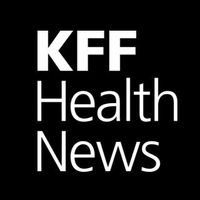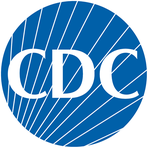The Bird Flu Dilemma: A Call for Action in the U.S. Dairy Industry** **
July 25, 2024, 5:14 pm

Location: United States, District of Columbia, Washington
Employees: 51-200
Founded date: 2009

Location: United States, Georgia, Atlanta
Employees: 10001+
Founded date: 1946
**
The bird flu is knocking at the door of the U.S. dairy industry. It’s a silent threat, creeping in with the stealth of a shadow. Colorado is ground zero, grappling with an outbreak that has already claimed millions of chickens and raised alarms among health officials. The stakes are high, and the clock is ticking.
In July 2024, Colorado officials announced a new strategy to combat the spread of the H5N1 virus. The previous approach, which relied on limited testing, failed to contain the outbreak. Now, dairies must test their milk to track the virus's movements. This decision comes after confirmed spillovers from infected dairies to poultry operations. The virus is deadly to birds but tends to leave cows relatively unscathed. Still, the impact on the poultry industry has been catastrophic, with 3.2 million chickens culled in a desperate bid to halt the spread.
The human toll remains low, with only a handful of cases reported among farmworkers. Yet, the potential for the virus to mutate and spread among humans looms large. The Colorado Department of Public Health and Environment has advised caution, urging people to avoid unpasteurized dairy products and sick animals. The risk to the general public is currently low, but that could change.
Across the Atlantic, Finland is taking proactive measures. The country plans to offer bird flu vaccinations to farmworkers, a move some experts argue the U.S. should emulate. The rationale is simple: prevention is better than cure. Vaccines could serve as a buffer against a potential outbreak. The U.S. has stockpiled millions of doses, but a vaccination campaign remains on the drawing board. The CDC is cautious, weighing the risks and benefits.
The bird flu is not a new adversary. It has been lurking in the shadows for years, but the current strain poses a unique challenge. Experts emphasize the need for more testing and monitoring. The U.S. has tested only a fraction of farmworkers, leaving a significant gap in understanding the virus's spread. With only four confirmed cases this year, the data is insufficient to draw definitive conclusions.
The CDC’s approach is reminiscent of past public health crises. The 1976 swine flu vaccination campaign serves as a cautionary tale. Officials rushed to vaccinate millions, only to find the threat was overstated. Adverse effects emerged, and the campaign became a lesson in the dangers of acting too quickly. Today, the CDC is treading carefully, but some argue that the situation is different. This time, the focus is on a targeted vaccination for those in close contact with livestock, not a mass campaign.
The vaccine available is an older strain, but studies suggest it could provide some protection against the current H5N1 variant. It’s a safety net, albeit not foolproof. The urgency is palpable. Experts warn that if the virus mutates to spread easily among humans, it could trigger a pandemic. The potential for a dual infection with seasonal flu could create a perfect storm, allowing the bird flu to adapt and spread rapidly.
Education is another critical piece of the puzzle. Many farmworkers remain unaware of the risks posed by the virus. Outreach efforts have been slow, leaving workers in the dark about how to protect themselves. This gap in communication could have dire consequences. The time for action is now, before the situation escalates further.
As the U.S. dairy industry faces this unprecedented challenge, the need for a coordinated response is clear. Testing, vaccination, and education must go hand in hand. The CDC must engage with farmworkers and owners to ensure everyone understands the risks and preventive measures. The clock is ticking, and the stakes are high.
The bird flu is a wake-up call. It’s a reminder that nature can turn on us in an instant. The U.S. must learn from past mistakes and act decisively. Vaccination campaigns should not be delayed. Testing should be ramped up. The health of the dairy industry—and the public—depends on it.
In conclusion, the bird flu outbreak in Colorado is a critical moment for the U.S. dairy industry. The threat is real, and the time for action is now. With the right measures in place, we can protect our farmers, our livestock, and ultimately, ourselves. The path forward requires vigilance, cooperation, and a commitment to public health. The stakes are too high to ignore.
The bird flu is knocking at the door of the U.S. dairy industry. It’s a silent threat, creeping in with the stealth of a shadow. Colorado is ground zero, grappling with an outbreak that has already claimed millions of chickens and raised alarms among health officials. The stakes are high, and the clock is ticking.
In July 2024, Colorado officials announced a new strategy to combat the spread of the H5N1 virus. The previous approach, which relied on limited testing, failed to contain the outbreak. Now, dairies must test their milk to track the virus's movements. This decision comes after confirmed spillovers from infected dairies to poultry operations. The virus is deadly to birds but tends to leave cows relatively unscathed. Still, the impact on the poultry industry has been catastrophic, with 3.2 million chickens culled in a desperate bid to halt the spread.
The human toll remains low, with only a handful of cases reported among farmworkers. Yet, the potential for the virus to mutate and spread among humans looms large. The Colorado Department of Public Health and Environment has advised caution, urging people to avoid unpasteurized dairy products and sick animals. The risk to the general public is currently low, but that could change.
Across the Atlantic, Finland is taking proactive measures. The country plans to offer bird flu vaccinations to farmworkers, a move some experts argue the U.S. should emulate. The rationale is simple: prevention is better than cure. Vaccines could serve as a buffer against a potential outbreak. The U.S. has stockpiled millions of doses, but a vaccination campaign remains on the drawing board. The CDC is cautious, weighing the risks and benefits.
The bird flu is not a new adversary. It has been lurking in the shadows for years, but the current strain poses a unique challenge. Experts emphasize the need for more testing and monitoring. The U.S. has tested only a fraction of farmworkers, leaving a significant gap in understanding the virus's spread. With only four confirmed cases this year, the data is insufficient to draw definitive conclusions.
The CDC’s approach is reminiscent of past public health crises. The 1976 swine flu vaccination campaign serves as a cautionary tale. Officials rushed to vaccinate millions, only to find the threat was overstated. Adverse effects emerged, and the campaign became a lesson in the dangers of acting too quickly. Today, the CDC is treading carefully, but some argue that the situation is different. This time, the focus is on a targeted vaccination for those in close contact with livestock, not a mass campaign.
The vaccine available is an older strain, but studies suggest it could provide some protection against the current H5N1 variant. It’s a safety net, albeit not foolproof. The urgency is palpable. Experts warn that if the virus mutates to spread easily among humans, it could trigger a pandemic. The potential for a dual infection with seasonal flu could create a perfect storm, allowing the bird flu to adapt and spread rapidly.
Education is another critical piece of the puzzle. Many farmworkers remain unaware of the risks posed by the virus. Outreach efforts have been slow, leaving workers in the dark about how to protect themselves. This gap in communication could have dire consequences. The time for action is now, before the situation escalates further.
As the U.S. dairy industry faces this unprecedented challenge, the need for a coordinated response is clear. Testing, vaccination, and education must go hand in hand. The CDC must engage with farmworkers and owners to ensure everyone understands the risks and preventive measures. The clock is ticking, and the stakes are high.
The bird flu is a wake-up call. It’s a reminder that nature can turn on us in an instant. The U.S. must learn from past mistakes and act decisively. Vaccination campaigns should not be delayed. Testing should be ramped up. The health of the dairy industry—and the public—depends on it.
In conclusion, the bird flu outbreak in Colorado is a critical moment for the U.S. dairy industry. The threat is real, and the time for action is now. With the right measures in place, we can protect our farmers, our livestock, and ultimately, ourselves. The path forward requires vigilance, cooperation, and a commitment to public health. The stakes are too high to ignore.